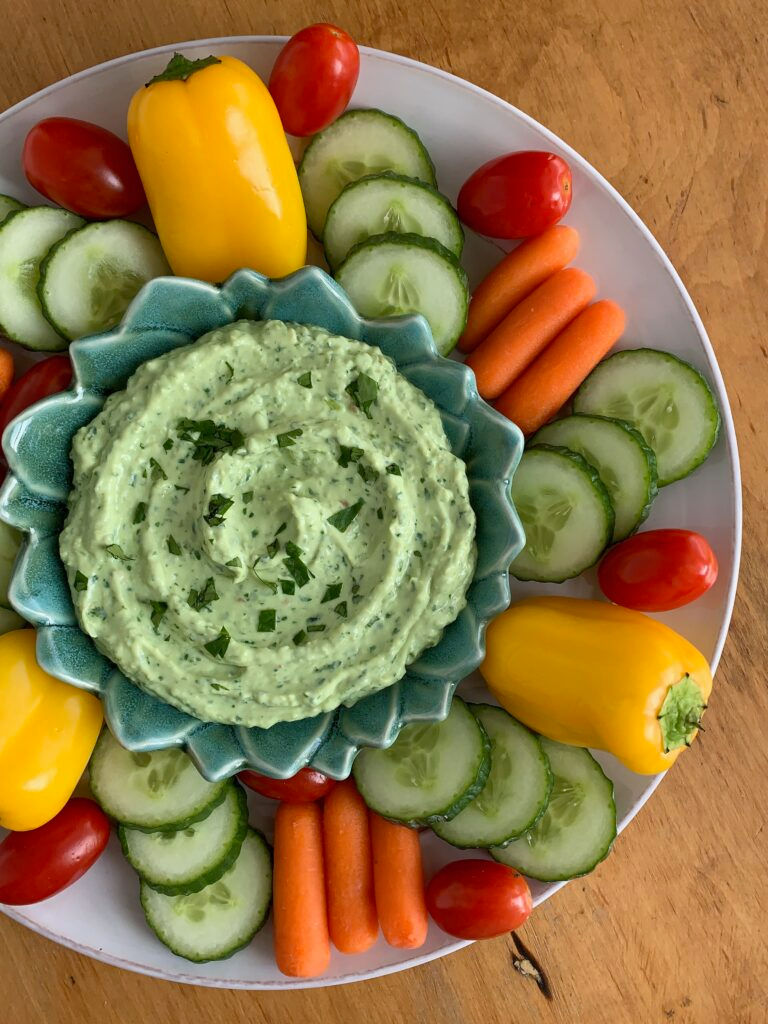5 Simple Ways to Increase Your Vegetable Intake
- Hope Spickard

- Jan 22, 2021
- 6 min read
Updated: Apr 2, 2021
Everyone knows vegetables are good for you, but eating veggies every day can seem daunting when it’s not something you’ve been in the habit of doing. It doesn’t have to be! I have 5 simple ways for you to increase your veggie intake that you can start today.

Before I get into these 5 Simple Ways to Increase Your Vegetable Intake, I want to discuss why increasing your vegetable intake, specifically non-starchy vegetables, is beneficial for your health.
Why Eat Vegetables?
Non-starchy vegetables, basically any veggie aside from potatoes, peas, corn, and winter squash, are generally low in calories and carbohydrates, cholesterol-free, and rich in nutrition. Eating a variety of vegetables as part of a balanced diet may play a role in reducing the risk for heart disease, protecting against some cancers, and reducing the risk of nutrient deficiencies.
According to MyPlate, the recommendation for vegetable intake varies from person to person depending on age, sex, and activity level, but it's generally between 1-3 cups per day. For the amount of veggies recommended for you to eat each day, see here.
Eat The Rainbow
There are so many non-starchy vegetable options out there - green beans, spinach, carrots, purple cabbage, brussel sprouts, bell peppers, kale, summer squash, broccoli, okra, asparagus, beets, mushrooms, cauliflower, kale, eggplant, collard greens, tomatoes, cucumbers, celery, and many more. Veggies are filled with beneficial nutrients, namely fiber, vitamins, minerals, antioxidants, phytonutrients, and water.
Fiber consumption plays a beneficial role in digestive health, promotes fullness, and may help reduce the risk of heart disease. Vitamins A, C and K, folate, and potassium are some of the main vitamins and minerals found in vegetables. Vitamin A promotes eye, skin, and immune health; vitamin C aids in wound healing, collagen production, and iron absorption; vitamin K plays a role in normal blood clotting; folate aids in the formation of red blood cells and is important for women of childbearing age to reduce the risk of neural tube defects in infants; and potassium plays a role in fluid balance in the body.
Many vegetables reflect some of the nutrients they contain by their color. Green, yellow, orange, and red vegetables are generally rich in vitamin A; leafy green veggies are rich in vitamin K; red and purple/blue veggies are rich in anthocyanins, an antioxidant; and white or tan vegetables are typically rich in vitamin C. Eating the rainbow is a great way to get in a variety of vitamins and minerals and prevent nutrient deficiencies, and here are 5 simple ways you can put that into practice!

1. Prep your veggies
Taking a chunk of time on Sunday or another day of your choosing to prepare (wash, chop, and store) raw vegetables like carrots, celery, bell peppers, and cucumbers for snacking and/or lunches will increase the likelihood that you’ll eat them. You can also chop veggies you plan to cook during the week like broccoli, green beans, squash, sweet potatoes, cauliflower, and peppers to reduce your cooking prep time. I like to store my prepped veggies in Stasher Bags, reusable silicone bags, or reusable glass containers.
Though slightly more expensive, you can also choose to purchase ready-to-eat or ready-to-cook veggies from most grocery stores so you don’t have to do the prep work.
2. Keep prepped veggies in visible areas
The phrase “out of sight, out of mind” could not be more true. If you prep your vegetables ahead of time, but store them in the back of your refrigerator where you likely won’t see them, your chances of forgetting about them are pretty high. However, storing prepped veggies at eye level or visible areas in your fridge will increase the likelihood that you will choose them over something else when you open the fridge.
3. Sneak veggies into other dishes
I use this method often. Although I enjoy most vegetables, my husband is not the biggest fan. So I *sneak* vegetables into dishes that he enjoys (this will likely work for kids as well)!
Chopped frozen kale, steamed broccoli, roasted red bell peppers, green beans, and canned tomatoes are a few examples of vegetables that can easily be added to egg scrambles, egg bakes, pasta bakes, pasta sauces, casseroles, and soups. Carrots, summer squash, and peppers work well in both enchiladas and fried rice. You can even sneak frozen kale, frozen spinach, and avocado into smoothies for added nutrition without compromising taste. See below for a few tasty Hope For Balance recipes with "hidden" veggies (Tropical Berry and Greens Smoothie recipe on Instagram):
4. Try a new cooking method
Vegetables taste extremely different depending on preparation method. Many raw veggies tend to have a more bitter taste than cooked veggies. If raw veggies aren’t your thing, steaming, blanching, stir frying, sautéing, roasting, and grilling are all options you can try.
Steamed veggies are less bitter than raw, and they are generally soft. Broccoli and green beans are two of my favorite vegetables to steam. Add a little butter, salt, pepper, and lemon juice after steaming for added flavor.
Blanching is similar to steaming when it comes to flavor, but the vegetables are cooked in boiling water for a short period (less than 1 minute) and remain relatively firm afterwards. Blanched vegetables are easier to digest than raw, but still have a nice crunch.
Stir frying and sautéing are very similar methods. The main difference is that stir frying is a high heat short cooking method, resulting in a firmer end product, while sautéing is a medium heat cooking method, resulting in a softer vegetables. When stir frying vegetables, I use a wok and sesame oil due to its high smoke point. For more information on what oils to use at high heat, see here. Fresh ginger, minced garlic, soy sauce, or coconut aminos are all great additions to stir fried veggies and pair nicely with sesame oil.
When sautéing, you can use use oils like olive, avocado, canola, or coconut oil which all have moderately high smoke points. Garlic powder, salt, pepper, and Italian herb seasoning as well as chopped onions or shallots are great flavor additions to sautéed vegetables.
Roasting is one of my favorite preparation methods as it brings out more flavor than most other methods. When vegetables and other foods are roasted, a scientific process called the Maillard reaction, a caramelization process, occurs. This process brings out more sweetness than other preparation methods. To make some delicious and simple roasted veggies, drizzle the veggies in olive oil, season with salt, pepper, and any other seasonings of your choice, and roast at 400oF until the edges are slightly browned (20 minutes for most non-starchy vegetables). Broccoli, bell peppers, asparagus, green beans, eggplant, and brussel sprouts like these are a few of my favorite non-starchy vegetables to roast.
Steam roasting is basically the same thing as roasting, with one small addition. You roast the veggies as usual, but place a partially water-filled casserole dish on the bottom rack. The result is flavorful and crispy, but slightly softer and easier to digest than regular roasted vegetables.
Grilled vegetables are similar in flavor to roasted veggies, but with an added smokiness. You can grill pretty much anything!
5. Use veggies as dippers for your favorite dips
Raw, grilled, or blanched veggies are great dipper options for savory dips. Raw carrots, bell peppers, snap peas, cucumbers, and celery as well as grilled asparagus and summer squash pair well with hummus, yogurt based dips, pimento cheese, and chicken or tuna salad. Cucumbers, carrots, and bell peppers also pair well with Peanut Dipping Sauce.
Rather than pairing your favorite dips with a carbohydrate source like crackers, chips, or pretzels, try replacing half of of those carb-filled dippers with a veggie(s) of your choice.
My personal favorite veggie dippers include baby bell peppers, carrots, and cucumbers. These crunchy veggies pair perfectly with hummus and my 5-Minute Herby Avocado Yogurt Dip.
The Bottom Line
Eating a variety of vegetables as part of a balanced diet takes a little bit of prep work on the front end, but has great reward. You don't have to follow all of these tips, just find what works for you and stick to it. By incorporating more vegetables into your diet, you are better nourishing your body and promoting your health.
Follow me on Facebook, Instagram, and Pinterest. When you make this recipe, tag me at @hope.for.balance and use the hashtag #hopeforbalance for a chance to be featured in my Facebook or IG stories. I LOVE seeing your creations!


























Comments